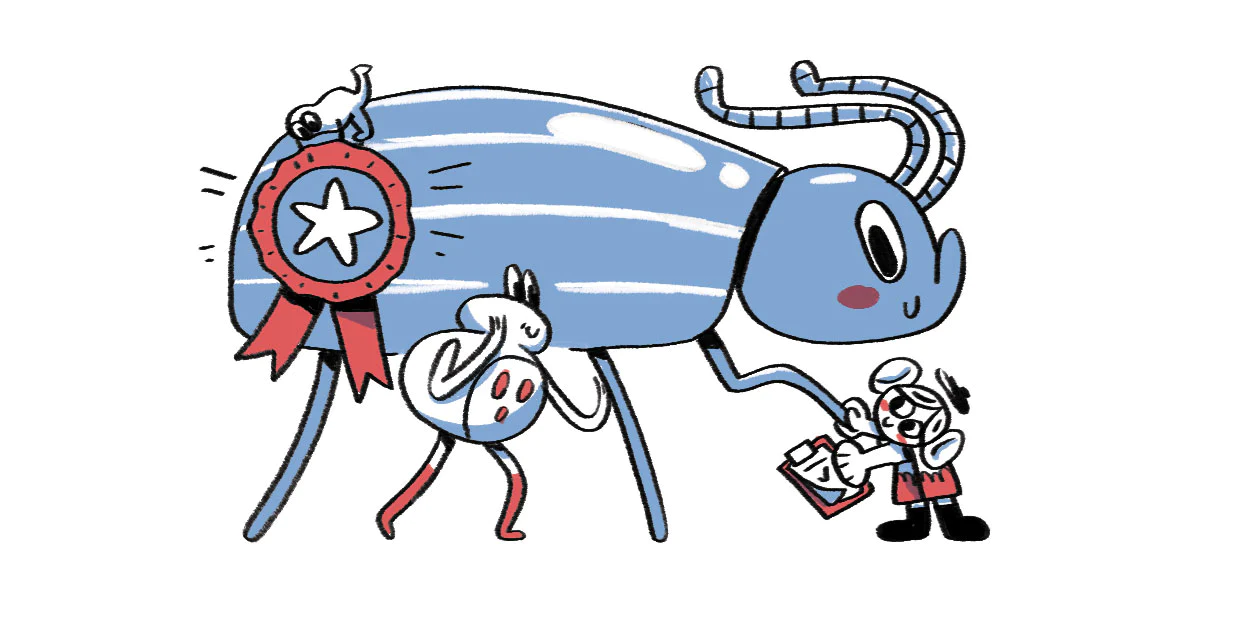You don’t have to wait until the end of a project to run an evaluation workshop – in fact, it’s better to start with one. Evaluate your ideas and the problems you think you’re solving to make sure you’re not wasting your efforts on a wild-goose chase.
When to use an evaluation workshop
This process is particularly powerful after you have been through the framing process and have generated some ideas as to how to solve your problems. Among those ideas, there could be an absolute diamond – but you don’t have time to test them all. Gather your team and prepare to interrogate your ideas with these tried-and-tested methods.
Premortem workshop
A Premortem workshop is a fun and creative way to put that little voice of doubt to work.
By letting your creativity run wild and dreaming up every possible way that your project might crash and burn, you create a surprisingly useful list of ‘worst case scenarios’ – and a careful plan for avoiding them.
Rose, Thorn, Bud workshop
A Rose, thorn, bud workshop is a fantastically simple approach for exploring… well, just about anything.
Gather your team together, explain the visual concept and start evaluating the things you love and hate about your project/idea, as well as the opportunities for improvement.
This is also a great tactic for design teams running critique sessions. It gives order to an otherwise chaotic feedback process.
SWOT Analysis workshop
A SWOT analysis workshop is a powerful tool for evaluating the strengths, weaknesses, opportunities and threats associated with your project or organisation – or anything else you wish to use it for.
The output of this session is a bigger-picture view of everything your project has going for it and all the obstacles in its way. This enables you to tighten up your plans, streamline your approach and achieve so much more than you could without this level of oversight.
Heart, Head, Hand workshop
A Heart, head hand workshop highlights the value of a diverse product team by bringing everyone together to explore the practical and emotional elements of an idea.
In as little as 30 minutes you’ll answer questions like “Who is going to LOVE this idea?” (heart), “Does this idea support our business objectives?” or “Is this idea different enough from what competitors offer?” (head) and “Will this idea satisfy any regulatory requirements?” (hand).
By the time you’ve finished, you’ll know whether or not this idea has legs, or if it belongs in the bin. Talking of ‘legs’…
Idea Beetle workshop
If you really want to test if an idea has legs, an Idea beetle workshop is another creative workshop that gets you to inspect all elements of your plan with a critical eye.
With a carefully curated set of questions and an even-more carefully drawn beetle-shaped diagram, this approach puts your idea through the wringer and gives you enough insight to help you make that all-important decision: proceed, or scrap it and start again?
What comes next?
The next steps will depend on what you discover during your evaluation. The ideal outcome? A bombproof idea that you are now ready to prototype. An also-great outcome would be lots of ideas – in which case, decide which one to test with another workshop.
Alternatively, you might need to get the sticky notes out and come up with some new ideas.


How can you effectively evaluate and select the best ideas from those generated during the framing process, especially when time is limited? Gather your team and use these tried-and-tested methods to interrogate your ideas and identify the ones with the most potential.
Regard Telkom University